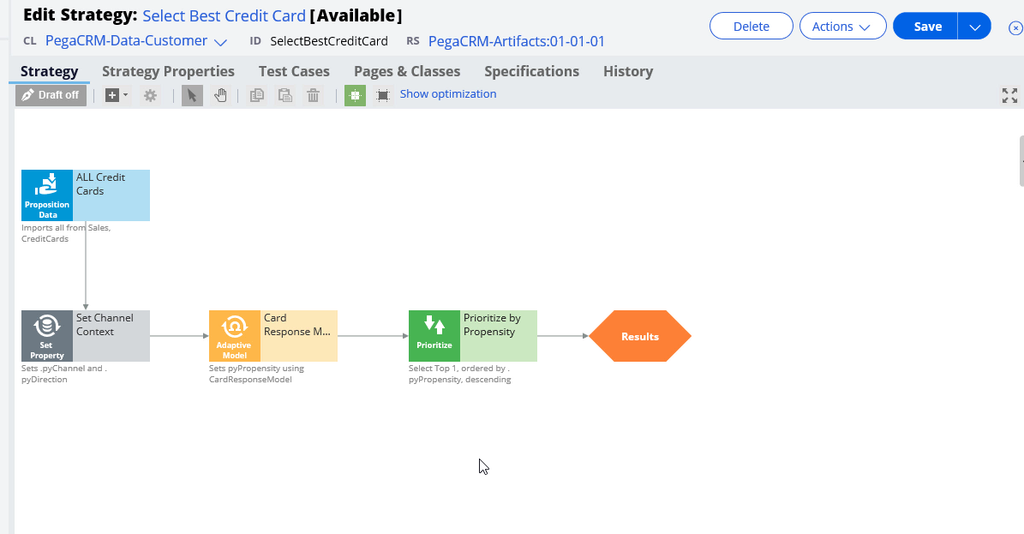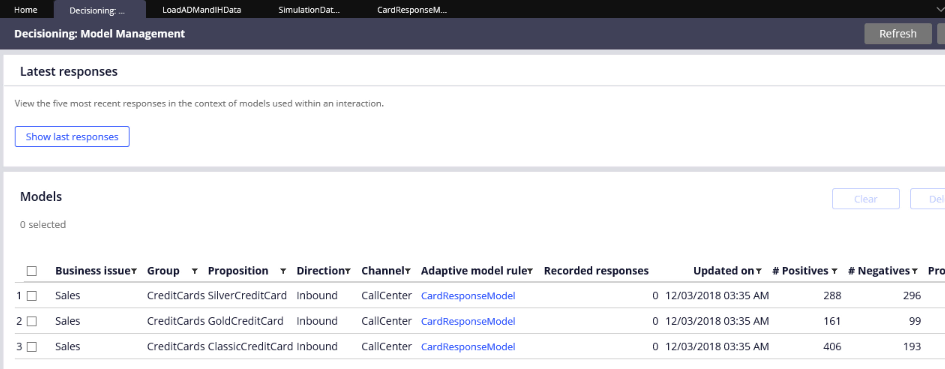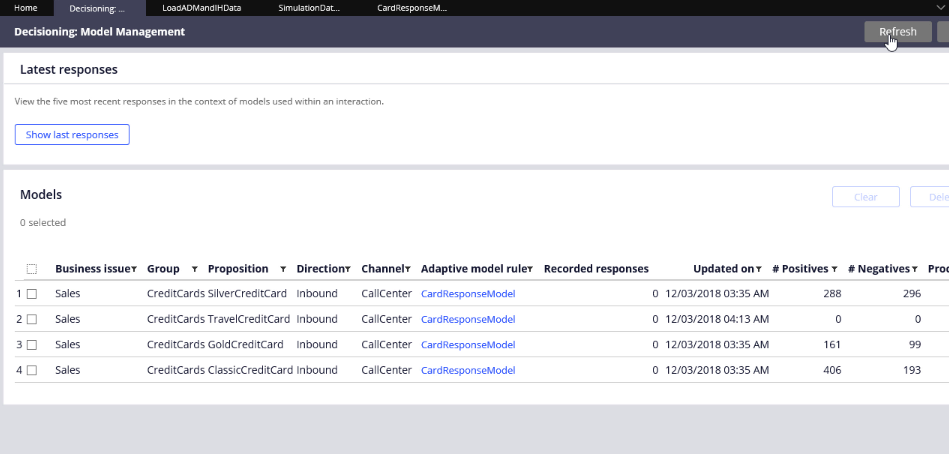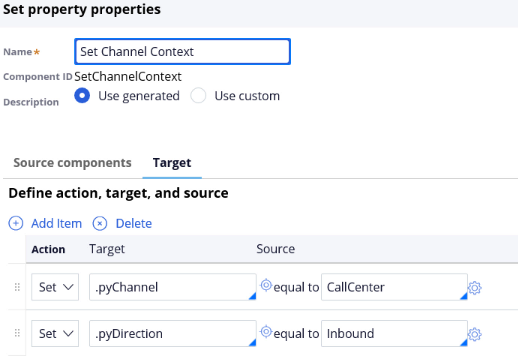
Introducing new offers
Introduction
BankCo wants to add a new credit card offer for the Travel Credit Card to its ongoing promotion. The business currently uses a decision strategy to select the credit card the customer is most likely to accept. The strategy uses adaptive models to determine the likelihood of card acceptance.
Video
Transcript
This demonstration illustrates what happens when you add a new proposition to a strategy that includes an adaptive model.
BankCo wants to offer a new credit card, Travel Credit Card, to their ongoing promotion. They currently use a decision strategy to select the credit card the customer is most likely to accept.
The strategy uses adaptive models to determine the likelihood of card acceptance.
Let's execute the strategy and examine the output of the adaptive models. The adaptive models have already collected response data on which to base their predictions. The output of each model is the propensity which is calculated for every proposition.
Let's switch to the Management landing page to see which models are in use.
There is a model for each existing proposition.
Let's add a new proposition, Travel Credit Card, to the Credit Card group. Pause the video now and consider the changes you need to make to the strategy to comply with BankCo's request.
The answer is none. The adaptive model configuration does not represent a physical adaptive model. When you configure an adaptive model record no physical models are created. The system creates the physical models on-the-fly, once there is a demand for a given model. Since the campaign has been running for some time, the adaptive models for the Gold, Silver and Classic credit cards have already been created.
Typically, the physical model creation will happen when you test a strategy that uses an Adaptive Model component. Let’s execute our strategy and see what happens.
During execution, the engine evaluates each component and determines the final strategy result. When it evaluates the Adaptive Model component, it requests the propensity for each proposition and channel combination dictated by the component inputs. If the models do not exist, they are created. Automated instantiation of the models has one major benefit. New propositions are automatically picked up by the Adaptive Decisioning Manager. As a result, the Strategy Designer does not have to change the model configuration to create a new physical model.
If you return to the Management landing page, you can see a new adaptive model was created for the Travel Credit Card. The same model configuration can be used to create physical models that are applicable to different propositions, channels or directions.
Now, reconfigure the Set Property component and re-test the strategy.
On the Management landing page, you can see the new models that have been created by the system. The Channel and Direction settings enable adaptive models to make decisions based on customer behavior in a specific channel.
You are at the end of this demonstration. The demo illustrated how and when the system creates new physical adaptive models.





